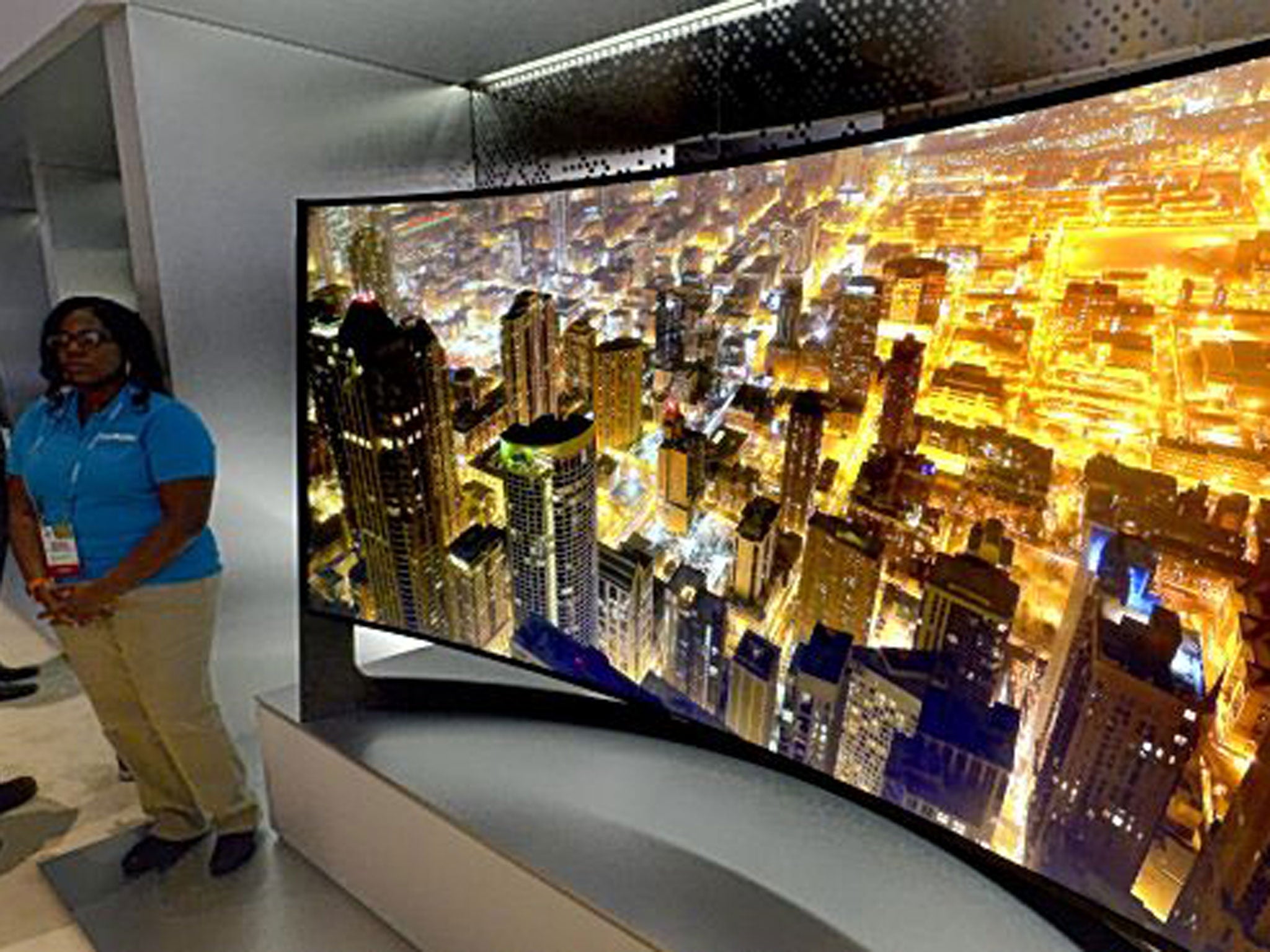CES: is gadgets flaunting their curves innovation?
Geek mythology

Anyone who enjoys running their fingers down the bleeding edge of technological innovation can currently be found at the Consumer Electronics Show (CES) in Las Vegas, where the brightest technology companies unveil gizmos and then wait with fingers crossed and buttocks clenched for some kind of reaction. Situated as I am, approximately 5,000 miles from CES, I'd hoped to be able to give a dispassionate appraisal of the first couple of days, but, actually, I found myself getting cross. The source of my ire was television – and not in the traditional manner where you throw cushions at politicians spouting drivel on Newsnight. No, this was more about their form and function.
Press day at CES was dominated, both figuratively and literally, by televisions, colossal televisions, imposing objects that stood ridiculously tall and even more ridiculously wide, their pixels shimmering like impossibly tiny jewels. Even before this week kicked off, we knew that LG and Samsung were both going to show off 105in, 11 million-pixel televisions with curved screens, so that wasn't much of a surprise. Neither was the unveiling of various younger siblings and distant cousins – 55in, 65in, 78in, 84in screens, all curved, from TCL and RCA as well as LG and Samsung. But their impact was deadened even further by the question they all seemed to pose: who and what are these TVs actually for?
Let's talk resolution. The tech industry is well used to bombarding us with superficially impressive numbers, and screen resolution provides us with a particularly hilarious example of this. Until fairly recently, resolution was measured by the number of horizontal lines, but to get the numbers up, they're now measured in terms of vertical lines, as there are more of them. So, 1,080p HD televisions (1,920 pixels across) are now referred to as 2K (I suppose 1,920 is near enough to 2,000), while Ultra HDTVs, with 3,840 pixels across, are now 4K. Manufacturers are desperate to persuade us of the benefits of 4K, but do keep in mind that the human eye is unable to perceive the difference between 2K and 4K unless the TV is preposterously huge. Hence, preposterously huge TVs. It's as if manufacturers are locked in a pattern of mutually assured technological indulgence, while consumers sit back and think, "there's no way I'd get that thing up the stairs". Remember 3D? Despite ferocious marketing, few of us could care less about it, but at least we can tell when we're watching it.
And then there's the flaunting of these curves, as the Daily Mail would put it. Samsung showed off an 85in television that can be either flat or curved (pictured), transformed from one state to the other with the press of a button. "It's mesmerising to watch it bend back and forth," said a correspondent for Gizmodo, reminding me of Alan Partridge locking and unlocking his car because he likes the noise it makes. TCL informs us that the arc angle of their curved screens is "the same as your retina", to which I say OK, but is that actually relevant? I can understand why huge cinema screens are curved, because they're receiving images from a curved projector lens and it helps to maintain focus at the edges. But if you tell me that curved televisions offer a "more immersive experience", I'll tell you that I don't think I have the space in my home to achieve "immersiveness", and neither does anyone I know.
Scale those curves down and the benefits are slightly easier to comprehend. LG's G Flex phone, its availability just announced for the US market, comes with a gently curved screen, as does Samsung's Galaxy Round. According to figures coming out of South Korea, the "impressive viewing angles" of these phones haven't proved to be much of a hit with the public thus far, but they do sit better in the hand, they're less prone to screen scratches, and the bendy flexibility of the LG model leaves it less prone to destruction under foot or, indeed, bum.
No, the stuff that really catches my eye at CES tends not to come with accompanying fireworks and fanfare. It's things like Lowe's Iris system, low-cost home automation that changes the way we operate our heating, lighting and security. Mophie's smartphone cases that come with built-in batteries and extra storage. Sleep Number's x12 Smart Bed, which actively improves sleep and helps to stop your partner snoring. Stuff that actually improves our lives, rather than empty promises dressed up with impenetrable jargon.
Subscribe to Independent Premium to bookmark this article
Want to bookmark your favourite articles and stories to read or reference later? Start your Independent Premium subscription today.

Join our commenting forum
Join thought-provoking conversations, follow other Independent readers and see their replies
Comments